East Kalimantan Traditional House
East Kalimantan is one of the provinces that is famous for its culture and customs such as traditional clothes and traditional houses.
The traditional house of East Kalimantan is known as Rumah Lamin, where the house is actually the original house of the Dayak Kenyahk tribe.
Where later in 1967, the traditional house was designated as a traditional house of East Kalimantan by the government.
Lamin's house has a very wide and large building, where in the house it can be occupied by many people.
In addition, the Lamin traditional house also has its own philosophical values.
East Kalimantan Traditional House Philosophy
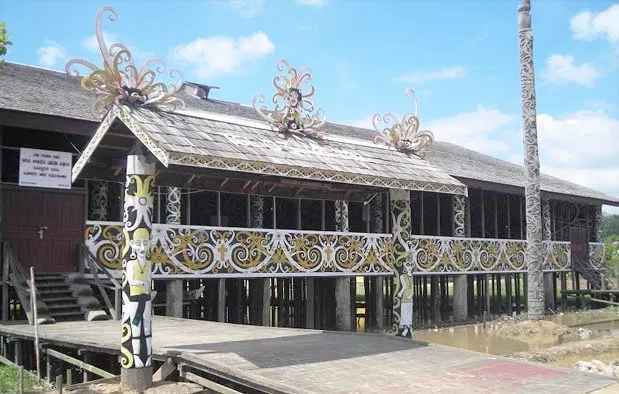
The first philosophical value of the Lamin traditional house lies in its large building.
Where the extent of the building shows that the Dayak tribe is a tribe that lives simultaneously in one house.
In addition, other philosophical values also lie in the distinctive carvings on the walls, stairs, fences, and other parts that have philosophical values as a repellent against reinforcements.
Characteristics of Lamin Traditional House

The Lamin traditional house has unique building characteristics so that it can be recognized by people outside the region.
Lamin house is a type of traditional house with a stilt house architectural style.
Where the floor of this traditional house is on a support pole in the form of a tube or cylindrical in sufficient number.
In general, the traditional Lamin house has a size of 300 m x 15 m x 3 m and can accommodate up to 100 people.
Where usually the traditional house is inhabited by one descendant of the Dayak tribe, where each family has its own room as a place to rest.
Overall, the traditional Lamin house is made of ironwood which is a typical wood from the island of Kalimantan and is known to be very strong.
The ironwood when exposed to water will become stronger even like iron, so it is not surprising that many people call ironwood as ironwood.
With the style of a house on stilts, of course the Lamin traditional house has a ladder that is used for access in and out of the house.
In addition to the pillars supporting the floor of the house, there are also other supporting poles to support the skeleton of the roof of the house.
Characteristics of Traditional Houses of East Kalimantan
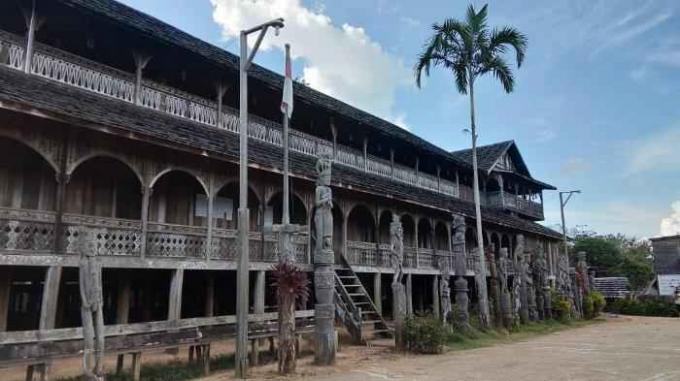
In addition to the characteristics, there are several characteristics of the traditional house of East Kalimantan that make it different from Indonesian traditional house other.
Table of contents
1. Have Engraving
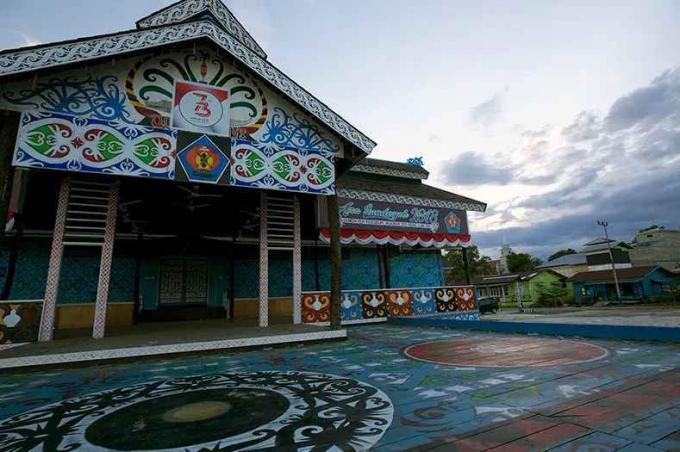
The first characteristic of the Lamin traditional house and quite prominent is the presence of beautiful ethnic carvings in the form of an image that has meaning.
The engraved images used usually have living creature motifs.
Such as carving plants, carving animals, carving human faces, and so on.
According to local people's beliefs, the carvings made are able to protect the families who occupy them from the dangers of witchcraft that can attack at any time.
2. Construction Material
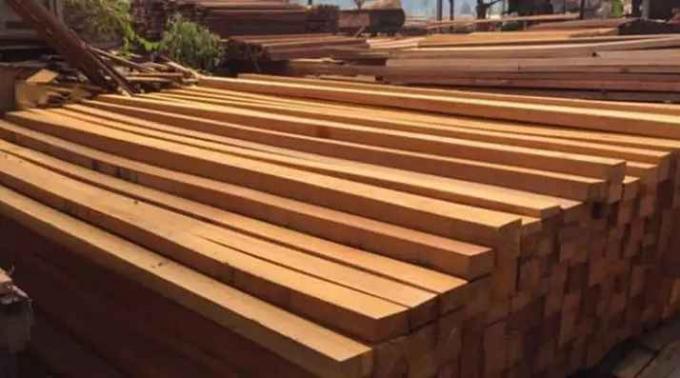
The next characteristic is found in the materials or construction materials used.
Most of the Lamin traditional houses are made of ironwood which can only be found in the forests of Kalimantan.
Ironwood is one of the best types of wood that has very strong properties and is not easily weathered.
In addition, if ironwood is exposed to water, the wood will grow stronger and harder like iron.
Therefore, many people also call ironwood by the name of iron wood.
Where the wood is very effective for use as a house foundation.
3. Distinctive Color Pattern

Lamin traditional house has another characteristic in the form of contrasting colors and able to decorate the walls.
The colors used in general are red, yellow, blue, black, and white.
Where each of these colors has its own philosophical meaning, red as a symbol courage, yellow as a symbol of authority, black as a symbol of shade, and white as a symbol of chastity.
4. Room Part
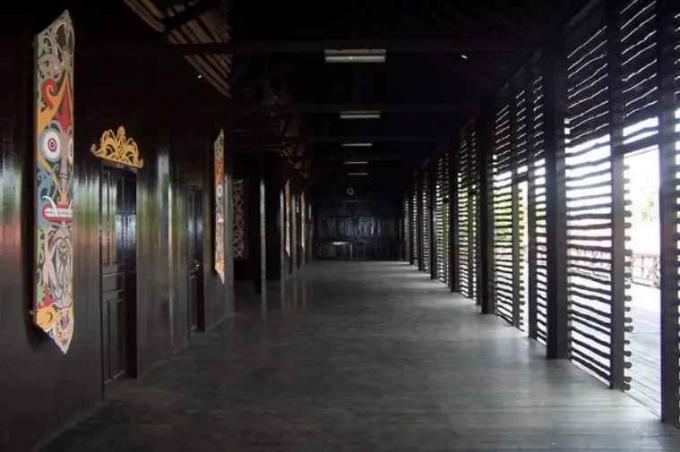
In general, the traditional house of East Kalimantan consists of 3 rooms, namely the living room, bedroom, and bedroom.
The form of the living room is an empty and long space that is useful as a place to receive guests and a space to carry out traditional activities.
Meanwhile, the bedroom is usually distinguished by gender, namely male and female.
In addition, there is also a bedroom specifically for couples or newlyweds.
5. Stairs and Under House
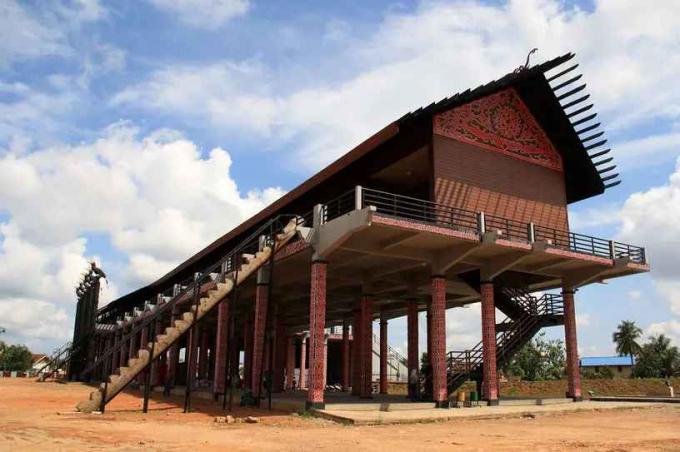
Another characteristic is found on the stairs and under the house.
Where the stairs of the house are useful for access roads in and out of the house, the stairs are also made of ironwood.
Then the part under the house is an open space under the house which is squeezed by supporting poles.
Under the house is usually used as a place to raise chickens, goats, horses, or cows.
In addition, under the Lamin traditional house is also commonly used as a place to store agricultural tools and products.
6. Home Accessories

West Kalimantan traditional houses are also famous for their unique home accessories.
Where Lamin traditional house accessories can be in the form of handicrafts made of wood and even other crafts such as gold jars and traditional weapons.
In addition, the Dayak tribe also used to add accessories in the form of a statue of a god which they also believed to be able to be the guardian of the house.
7. Dragon Head on Lamin House Roof
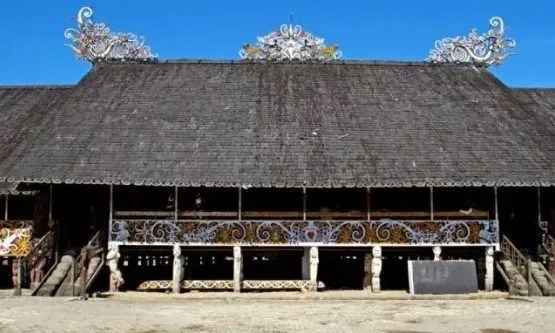
The last characteristic that makes it very different from other traditional houses is that there is a dragon's head carving on the roof of the house.
The carving made of wood is believed by the local community as a symbol of greatness, heroism, and nobility.
Conclusion
The traditional house of East Kalimantan is commonly known as the Lamin traditional house.
Where the traditional house has characteristics, characteristics, and philosophies that make it different from other traditional houses.
